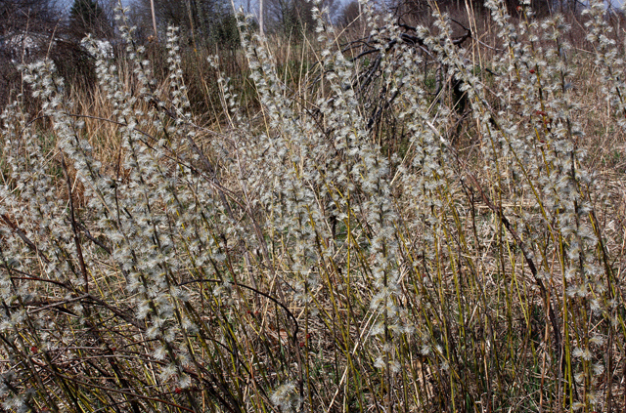
Common Name: Prairie Willow, Dwarf Willow
Full sun; wet to moderately dry moisture level; tolerates a range of soils including fertile loam, sandy and clay soils; neutral pH Is optional but tolerates slightly acid and slightly alkaline pH.
6-12 feet height by 6-12 feet spread; blooms in spring; greenish catkins appear before leaves emerge; small, hairy capsules ¼ inch long in June and when ripe, open to release tiny wind-blown seeds with silky hairs.
Growth Rate: Fast but still relatively slow growing for a willow
Maintenance: Plants can be cut back down to the trunk as necessary to revitalize. Susceptible to wind damage. Frequent disease and insect problems.
Propagation: Difficult from seed; roots easily from cuttings. Seeds retain viability for only a few days.
Native Region: Scattered statewide
Deciduous, low to medium sized shrub that forms thickets of ascending, wand-like branches. An unusual willow that can be found in either moist lowland or drier upland sites. Different shrubs will develop either all male catkins or all female catkins. Grows naturally in boggy openings in pine woods, low areas, meadows, balds and mountain ridges as well as other drier upland locations. Not considered invasive. Attracts birds, bees and butterflies.


